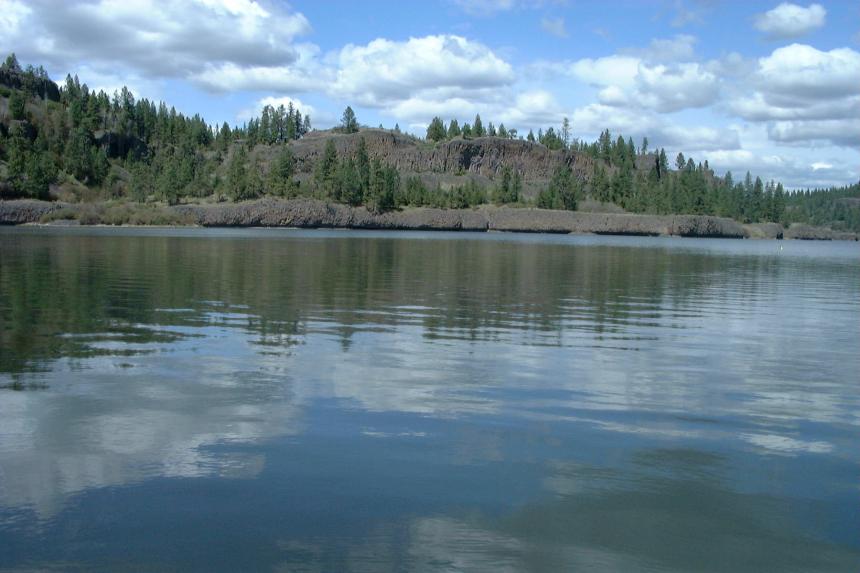This lake is highly productive and is one of the best warmwater fishing lakes in Washington, it has a long history of producing excellent yellow perch, black crappie and largemouth bass catches. Not only popular with anglers but it is also popular for kayakers and paddlers, Bonnie Lake is situated in the heart of the channeled scablands, this lake is a unique fishery and geological experience.
How to access this lake
This lake is accessed with a boat by traveling up Rock Creek via the Belsby Road/Hole in the Ground Road crossing of Rock Creek. Boat launching is difficult and it is recommended that boats 14 feet and smaller are used to access this lake.
Be respectful of private property
The access to this lake is across private property and is allowed due to the generosity of private landowners. We ask all those accessing the lake to be respectful of private property owners and their property rights.
Two-pole fishing is allowed
Shoreline access: Good - This lake can only be accessed by boat.
Species you might catch
- Black crappie
- Brown bullhead
- Grass pickerel
- Kokanee
- Largemouth bass
- Pumpkinseed Sunfish
- Rainbow trout
- Signal crayfish
- Tench
- Yellow perch
Lake information
County: Spokane
Acreage: 327.00 ac.
Elevation: 1793 ft.
Center: 47.28183, -117.558588
Open in Google Maps
Catchable fish plants
| Stock Date | Species | Number Released | Number of Fish Per Pound | Facility |
|---|---|---|---|---|
Visit the Catchable Trout Plants page for a more detailed search of trout plants in this or other bodies of water. To view or download the source data for this table visit the WDFW Fish Plants dataset on the Washington State Open Data Portal
Fishing prospects calendar
Rainbow trout
Kokanee
Largemouth bass
Yellow perch
Black crappie
Pumpkinseed Sunfish
Brown bullhead
Photos
